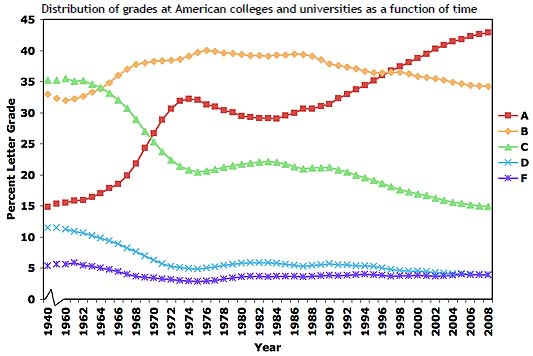Table 1.4:
Occupations with the most job growth, 2010 and
projected 2020
(Numbers in thousands)
from
http://www.bls.gov/emp/ep_table_104.htm
|
2010
National Employment Matrix title and code |
Employment |
Change, 2010-20 |
Median annual wage, 2010 |
These top 30 positions represent about
9,286,000 of the20,469,000 positions to be
created.
Only ten positions consisting of
3.005,000 positions to be created are in
positions that paid over the median 2010
salary of $33,840.
Entering nursing on a registered nursing
career path requires an AA or BS Degree.
Only 746,000 positions(3.6%) require a
bachelors degree only to work as a primary/
secondary teachers or accountants/auditors.
Only 0.0079 will be doctors. |
|
2010 |
2020 |
Number |
Percent |
|
Rank- |
Total,
All Occupations |
143,068 |
163,537 |
20,469 |
14 |
$33,840 |
|
1 |
Registered
Nurses |
2,737 |
3,449 |
712 |
26 |
64,690 |
| |
Retail
Salespersons |
4,262 |
4,968 |
707 |
17 |
20,670 |
| |
Home Health
Aides |
1,018 |
1,724 |
706 |
69 |
20,560 |
| |
Personal Care
Aides |
861 |
1,468 |
607 |
70 |
19,640 |
| |
Office Clerks,
General |
2,951 |
3,440 |
490 |
17 |
26,610 |
| |
Combined Food
Preparation and Serving Workers, Including Fast
Food |
2,682 |
3,080 |
398 |
15 |
17,950 |
| |
Customer Service
Representatives |
2,187 |
2,526 |
338 |
16 |
30,460 |
| |
Heavy and
Tractor-Trailer Truck Drivers |
1,605 |
1,935 |
330 |
21 |
37,770 |
| |
Laborers and
Freight, Stock, and Material Movers, Hand |
2,068 |
2,387 |
319 |
15 |
23,460 |
|
10 |
Postsecondary
Teachers |
1,756 |
2,062 |
306 |
17 |
45,690 |
| |
Nursing Aides,
Orderlies, and Attendants |
1,505 |
1,808 |
302 |
20 |
24,010 |
| |
Childcare
Workers |
1,282 |
1,544 |
262 |
20 |
19,300 |
| |
Bookkeeping,
Accounting, and Auditing Clerks |
1,898 |
2,157 |
259 |
14 |
34,030 |
| |
Cashiers |
3,363 |
3,613 |
250 |
7 |
18,500 |
| |
Elementary
School Teachers, Except Special Education |
1,476 |
1,725 |
249 |
17 |
51,660 |
| |
Receptionists
and Information Clerks |
1,048 |
1,297 |
248 |
24 |
25,240 |
| |
Janitors and
Cleaners, Except Maids and Housekeeping Cleaners |
2,310 |
2,557 |
246 |
11 |
22,210 |
| |
Landscaping and
Grounds keeping Workers |
1,152 |
1,392 |
241 |
21 |
23,400 |
| |
Sales
Representatives, Wholesale and Manufacturing,
Except Technical and Scientific Products |
1,430 |
1,653 |
223 |
16 |
52,440 |
|
20 |
Construction
Laborers |
999 |
1,211 |
212 |
22 |
29,280 |
| |
Medical
Secretaries |
509 |
719 |
210 |
41 |
30,530 |
| |
First-Line
Supervisors of Office and Administrative Support
Workers |
1,424 |
1,628 |
203 |
14 |
47,460 |
| |
Carpenters |
1,002 |
1,198 |
196 |
20 |
39,530 |
| |
Waiters and
Waitresses |
2,260 |
2,456 |
196 |
9 |
18,330 |
| |
Security Guards |
1,036 |
1,231 |
195 |
19 |
23,920 |
| |
Teacher
Assistants |
1,288 |
1,479 |
191 |
15 |
23,220 |
| |
Accountants and
Auditors |
1,217 |
1,408 |
191 |
16 |
61,690 |
| |
Licensed
Practical and Licensed Vocational Nurses |
752 |
921 |
168 |
22 |
40,380 |
| |
Physicians and
Surgeons |
691 |
859 |
168 |
24 |
111,570 |
|
30 |
Medical
Assistants |
528 |
690 |
163 |
31 |
28,860 |
| |
|
|
|
9286 |
|
|
|
Source: Employment Projections
program, U.S. Department of Labor, U.S. Bureau
of Labor Statistics |
Back to top hhhhhhhh
|












